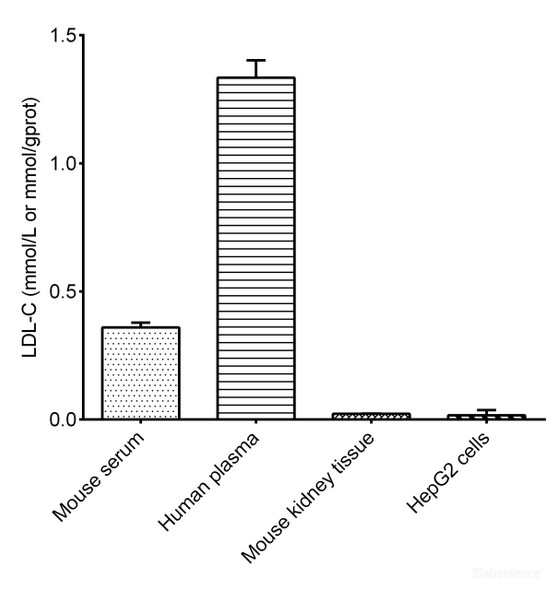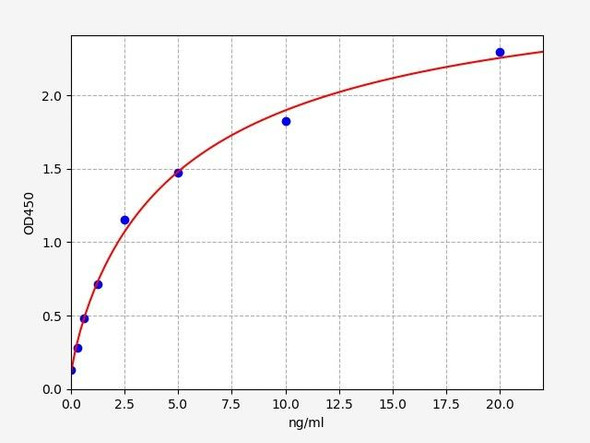

HDL and LDL/VLDL Assay Kit - Information
HDL and LDL/VLDL Cholesterol Assay Kit quantification kit is based on our improved PEG precipitation method in which HDL and LDL/VLDL are separated, and cholesterol concentrations are determined using a single Working Reagent that combines cholesterol ester hydrolysis, oxidation and color reaction in one step. The color intensity of the reaction product at 570nm or fluorescence intensity at Ex/Em = 530/585nm is directly proportional to total cholesterol concentration in the sample.
Applications
For quantitative determination of HDL and LDL/VLDL cholesterol and evaluation of drug effects on HDL and LDL/VLDL metabolism.
HDL and LDL/VLDL Assay Kit - Key Features
- Sensitive and accurate. Linear detection range in 96-well plate: 1 to 100 mg/dL cholesterol for colorimetric assays and 0.2 to 10 mg/dL for fluorimetric assays.
- Convenient. Room temperature assay. No 37°C heater is needed.
HDL and LDL/VLDL Assay Kit - Data Sheet | |
| Kit Includes | PBS: 2 ´ 1.5 mL Precipitation Reagent: 1.5 mL Assay Buffer: 20 mL Enzyme Mix: 120 uL Dye Reagent: 120 mL Standard: 1 mL 300mg/dL cholesterol |
| Kit Requires | Pipetting devices, 96-well plate and plate reader. |
| Method of Detection | OD570nm, or FL530/585nm |
| Detection Limit | OD, FL: 1, 0.2 mg/dL |
| Samples | Serum |
| Species | All |
| Protocol Length | 60 min |
| Size | 100 tests |
| Storage | Store PBS and Precipitation Reagent at room temperature and other reagents at -20°C. |
| Shelf Life | 6 months |
More Details
CHOLESTEROL concentrations in High-Density Lipoprotein (HDL) and Low-Density (LDL)/Very-Low-Density (VLDL) Lipoproteins are strong predictors for coronary heart disease. Functional HDL offers protection by removing cholesterol from cells and atheroma. Higher concentrations of LDL and lower concentrations of functional HDL are strongly associated with cardiovascular disease due to higher risk of atherosclerosis. The balances between high- and low-density lipoproteins are solely genetically determined, but can be changed by medications, food choices and other factors. Simple, direct and automation-ready procedures for measuring HDL and LDL/VLDL concentrations are very desirable.








